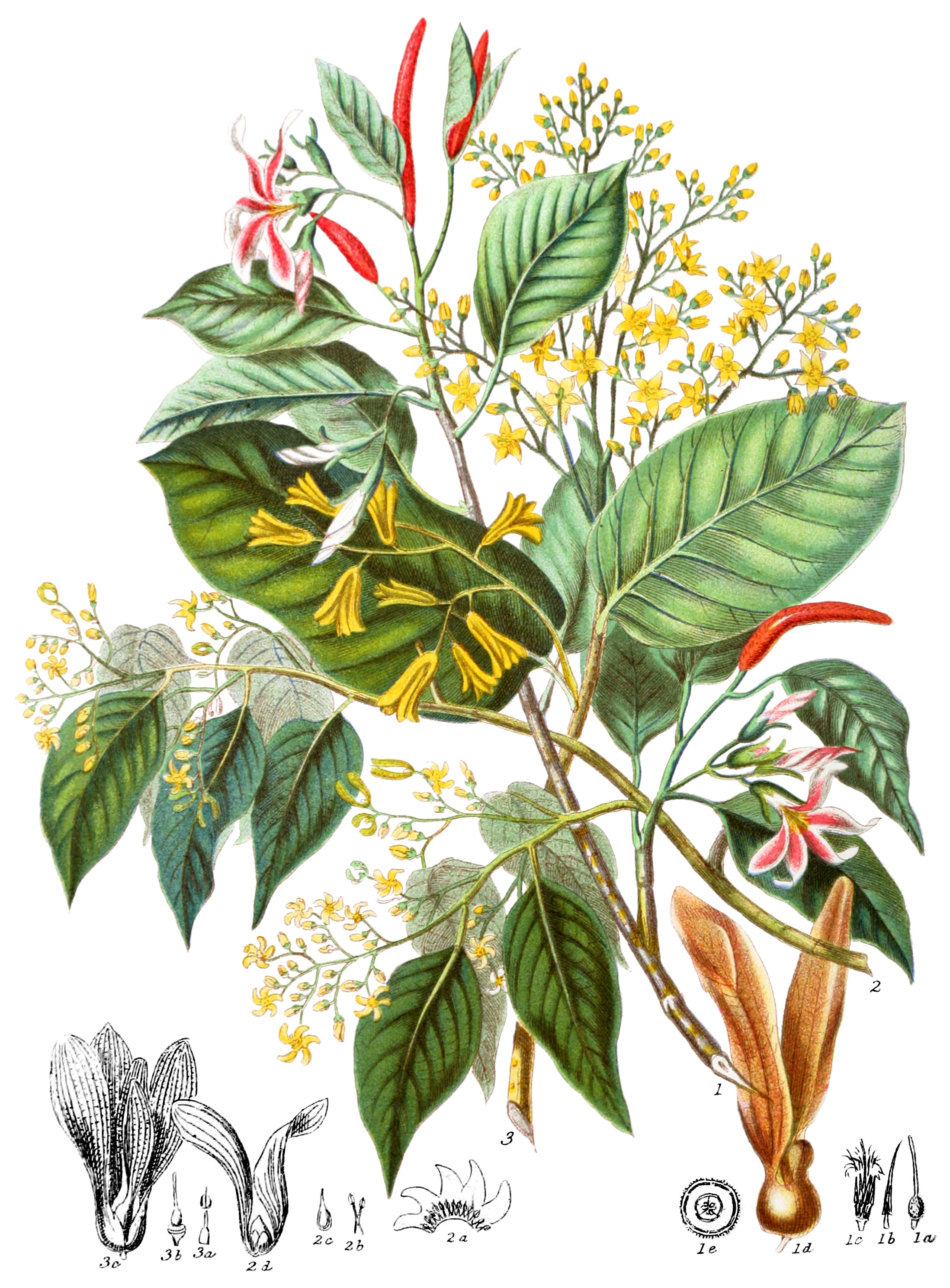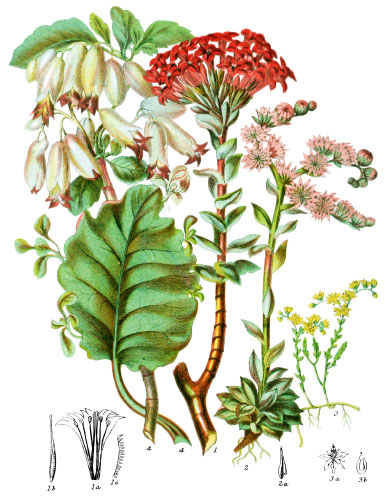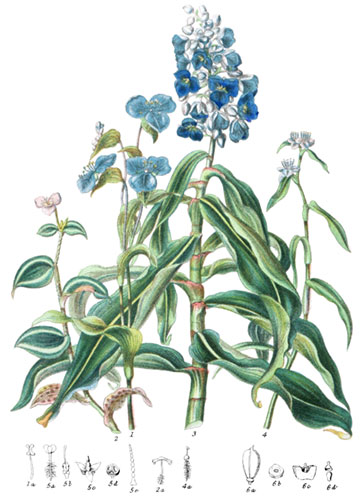Key characteristics
Gigantic trees, abounding in resinous juice. The leaves are alternate, rolled inwards in the bud, with veins passing from the mid-rib to the margin: the stipules are oblong, folded over the leaf-bud, and terminating the branches, like a sheath, until they fall off: the flowers are either solitary or several, from the base of the leaf-stalk, or on terminal branching panicles: the calyx is tubular, imbricated in the bud, five-lobed, unequal, persistent, afterwards enlarged. The petals are five in Dipterocarpus and Shorea, united into one at the base in Hopea, twisted in the bud: the stamens are numerous, distinct, or slightly combined in sets: the anthers are awl-shaped, opening longitudinally towards the point: the filaments are widened at the base: the ovary is above the base of the stamens three-celled, each cell containing a pair of ovules: the styles is single, surmounted by a simple stigma: the fruit is leathery, ripening only one cell, opening by three valves, or remaining closed, surrounded and crowned by the calyx, of which two or more divisions have become enlarged and leafy: the seed is single, without albumen.
The peculiar rolled-in stipules of these trees connect them with the Magnolia tribe; the resinous juice allies them with the Gamboge tribe; the enlarged, tough calyx resembles that of the Hazel-nut; but the limits of the Order are clearly defined, and separate it from all others.
The chief property is a balsamic resin.
The different trees of this tribe are at present unknown in a living state in the Temperate climate of Europe, although many of them would be extremely ornamental, from the stately grandeur fo their form, the noble foliage, the delicate beauty of the flowers, and the singular effect of the large drooping wings of the seed-vessel, often brightly coloured.
Select plants in this order
Not all plants listed are illustrated and not all plants illustrated are listed.
- Dipterocarpus, so named from the two wings of the fruit, abounds in the East Indies and in Java; several species yield resin; that of D. trinervis is used as a medicine in Java, and when spread over the leaves of the Plantain, forms a kind of torch, burning with a pale light, and shedding an agreeable perfume.
- D. gracilis (1) grows in woods in the interior of Java, to the westward, near Mount Parang, attaining 150 feet in height, and great thickness of stem; the hard, ash-coloured wood is very valuable for many purposes; pellucid golden drops of resinous balsam exude from fissures in the bark.
- D. turbinatus affords a supply of the famous balsam Gunjun, called by the English wood-oil, much employed for painting ships and houses in Bengal; to obtain the balsam a large notch is cut into the trunk of the tree, about three feet from the ground, where a fire is kept up till the wood is charred, after which the liquid flows out. The average produce of the best trees is said to be as much as forty gallons in one season.
- D. retusus, of Java, has a very graceful appearance when the large red-winged seed-vessels hang in profusion from the branches.
- Hopea odorata (2) is indigenous in Chittagong, perfuming the air with the fragrance of its blossoms during March.
- Shorea robusta (3), the Saul-tree of the Hindoos, is a striking object, standing singly on the outskirts of the jungles, rising to the height of 150 feet, with a straight, upright stem. It early attracted the attention of Europeans, and in one of the first collections of drawings mad in the interior of India, by Mr. Longcroft, towards the close of the last century, the Saul-tree forests are skilfully represented with their peculiar character. The heavy, close-grained timber ranks next to the Teak in strength, but is less durable; the purest portion of the abundant resin is burnt as incense in the templates; in a liquid state it is used as pitch for ships.
- Dryobalanops camphora, the celebrated camphor-tree of Sumatra and Borneo, contains a large quantity of camphor in hollow cavities of a foot or more in length; this is much prized by the Indians and Chinese, and affords considerable traffic.
- The resin called dhammar is procured from Vateria indica; when solid, it resembles amber, and is carved into ornaments by the natives; the fruit yields a fatty substance, used as tallow.
Locations
This Tribe exists only in Asia, chiefly in India and the islands of the Indian Ocean; in Java it forms the largest trees of the forests. Shorea extends to the most northern boundaries of the tribe, being found at the base of the Himalayas.
Legend
- Dipterocarpus gracilis, Slender-flowered Dipterocarpus. India and Java.
- Pistil.
- Stamens.
- Pistil and Stamens.
- Seed-vessel.
- Section of Ovary, magnified.
- Hopea odorata, Sweet-scented Hopea. Chittagong.
- Flower, magnified.
- Stamens, magnified.
- Pistil, magnified.
- Seed-vessel.
- Shorea robusta, Saul-tree. Hindostan.
- Stamen, magnified.
- Pistil, magnified.
- Seed-vessel.
Explore more
Posters
Decorate your walls with colorful detailed posters based on Elizabeth Twining’s beautiful two-volume set from 1868.
Puzzles
Challenge yourself or someone else to assemble a puzzle of all 160 botanical illustrations.





